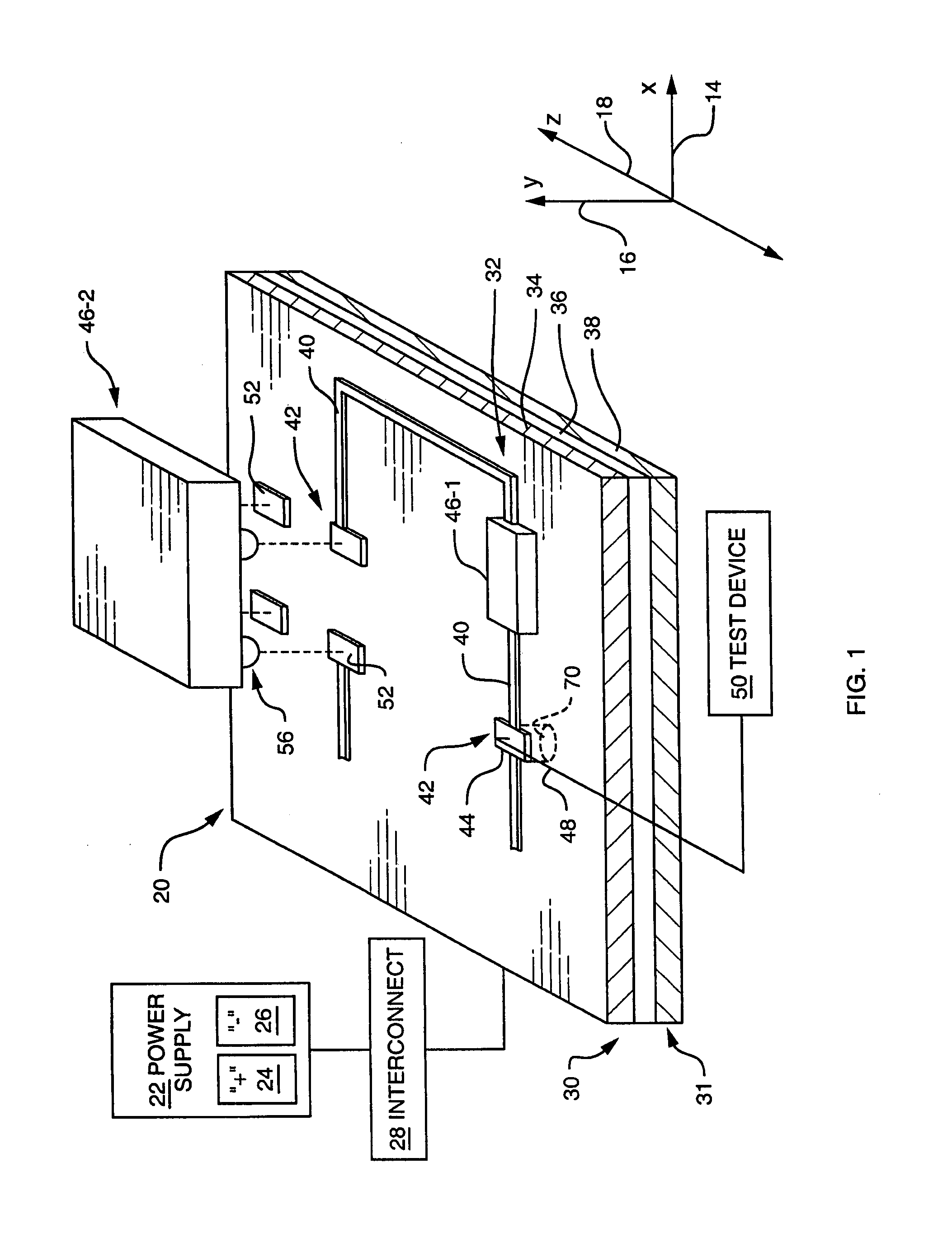Apparatus for reducing signal reflection in a circuit board
- Summary
- Abstract
- Description
- Claims
- Application Information
AI Technical Summary
Benefits of technology
Problems solved by technology
Method used
Image
Examples
Embodiment Construction
[0029]Embodiments of the present invention provide mechanisms for minimizing an impedance mismatch between a signal conductor (e.g., conductive trace) and a contact pad (e.g., conductive pad) on a circuit board to minimize signal reflection of a signal transmitted through the signal conductor and across the contact pad, thereby reducing signal loss. The circuit board has, in a first signal layer, the signal conductor having a relatively small width and the contact pad having a relatively large width. The relatively large width of the contact pad combined with the relatively narrow signal conductor creates an impedance mismatch between the contact pad and the signal conductor. The circuit board has, in a second signal layer, a ground plane separated from the first signal layer by a nonconductive layer. The circuit board defines an opening in the second signal layer underneath the contact pad. The presence of the ground plane underneath the contact pad typically affects the impedance ...
PUM
 Login to View More
Login to View More Abstract
Description
Claims
Application Information
 Login to View More
Login to View More - R&D
- Intellectual Property
- Life Sciences
- Materials
- Tech Scout
- Unparalleled Data Quality
- Higher Quality Content
- 60% Fewer Hallucinations
Browse by: Latest US Patents, China's latest patents, Technical Efficacy Thesaurus, Application Domain, Technology Topic, Popular Technical Reports.
© 2025 PatSnap. All rights reserved.Legal|Privacy policy|Modern Slavery Act Transparency Statement|Sitemap|About US| Contact US: help@patsnap.com



